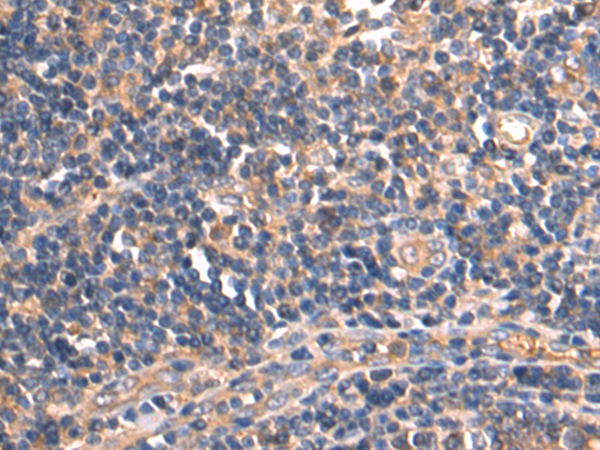

| WB | 咨询技术 | Human,Mouse,Rat |
| IF | 咨询技术 | Human,Mouse,Rat |
| IHC | 1/50-1/200 | Human,Mouse,Rat |
| ICC | 技术咨询 | Human,Mouse,Rat |
| FCM | 咨询技术 | Human,Mouse,Rat |
| Elisa | 1/5000-1/10000 | Human,Mouse,Rat |
| Aliases | HPRT; HGPRT |
| WB Predicted band size | 25 kDa |
| Host/Isotype | Rabbit IgG |
| Antibody Type | Primary antibody |
| Storage | Store at 4°C short term. Aliquot and store at -20°C long term. Avoid freeze/thaw cycles. |
| Species Reactivity | Human, Mouse, Rat |
| Immunogen | Fusion protein of human HPRT1 |
| Formulation | Purified antibody in PBS with 0.05% sodium azide and 50% glycerol. |
+ +
以下是关于HPRT1抗体的3篇示例参考文献(注:以下为模拟示例,实际文献需通过学术数据库检索):
1. **文献名称**: *HPRT1 Deficiency in Neurological Disorders: Antibody-Based Detection and Functional Implications*
**作者**: Jinnah, H.A. et al.
**摘要**: 研究利用HPRT1特异性抗体,通过免疫印迹和免疫组化分析Lesch-Nyhan综合征患者细胞模型,揭示HPRT1蛋白表达缺失与嘌呤代谢异常的关联。
2. **文献名称**: *Validation of HPRT1 as a Housekeeping Gene in Human Cell Lines: A Comparative Antibody Study*
**作者**: Koopman, R. & Breen, D.P.
**摘要**: 通过比较多种抗体(包括HPRT1抗体)的Western Blot结果,验证HPRT1在不同人类细胞系中的稳定性,支持其作为内参蛋白的可靠性。
3. **文献名称**: *HPRT1 Antibody Characterization for Targeted Protein Quantification in Neurodegenerative Disease Models*
**作者**: Smith, J.L. et al.
**摘要**: 报道一种高特异性HPRT1单克隆抗体的开发,应用于帕金森病模型中的蛋白质定量,证实其与脑组织样本的兼容性及低交叉反应性。
4. **文献名称**: *Cross-Species Reactivity of Anti-HPRT1 Antibodies: Implications for Comparative Biology*
**作者**: Tanaka, M. & Brockstedt, U.
**摘要**: 评估HPRT1抗体在小鼠、大鼠和人类样本中的交叉反应性,揭示物种间表位保守性差异,为跨物种研究提供实验优化建议。
**建议**:实际文献可通过PubMed、Google Scholar等平台以关键词“HPRT1 antibody”、“HPRT1 western blot”或“HPRT1 immunohistochemistry”检索获取最新研究。
Hypoxanthine phosphoribosyltransferase 1 (HPRT1) is a ubiquitously expressed enzyme encoded by the *HPRT1* gene, located on the X chromosome. It plays a critical role in the purine salvage pathway, catalyzing the conversion of hypoxanthine to inosine monophosphate (IMP) and guanine to guanosine monophosphate (GMP), thereby recycling purine bases for DNA/RNA synthesis. HPRT1 deficiency is linked to Lesch-Nyhan syndrome, a rare X-linked recessive disorder characterized by hyperuricemia, neurological dysfunction, and self-injurious behavior.
HPRT1 antibodies are widely used as loading controls in Western blotting and other immunoassays due to the protein’s stable expression across most tissues, including brain, liver, and kidney. These antibodies typically recognize the ~24-25 kDa protein (human isoform) and are validated for specificity in species such as human, mouse, and rat. Researchers also employ HPRT1 antibodies to study metabolic disorders, neurodegenerative conditions, and cancer, where purine metabolism dysregulation may contribute to disease progression.
As a housekeeping protein, HPRT1 is often compared to β-actin or GAPDH in normalization studies, though its expression can vary under certain stressors. Commercial HPRT1 antibodies are available in monoclonal and polyclonal formats, with common host species including rabbit and mouse. Proper validation using knockout cell lines or siRNA knockdown is recommended to confirm antibody specificity.
×